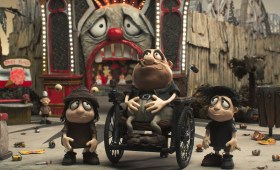Image by Glenn Carstens Peters via unsplash.com
Last week, the CEO of the Interactive Games and Entertainment Association Ron Curry penned a clearly frustrated open letter to the Minister for Communications and the Arts, Mitch Fifield, about his government’s stubborn persistence in ignoring the Australian videogame industry.
The letter was a direct response to the minister not mentioning videogames during a keynote address at the recent Australian content conversation held by the Australian Communications and Media Authority and other government bodies. But the frustration underpinning it is much deeper. It’s a response to years of struggle as the burgeoning local industry fights to be recognised as a significant creative force.
Indeed, the few times the current coalition government has recognised the existence of an Australian videogame industry have been nothing short of catastrophic. Videogames were one of the many victims of Prime Minister Tony Abbott’s brutal first budget in 2014, when the half-completed Australian Interactive Games Fund was stripped of its remaining A$10 million without any industry consultation. This left many small studios who were preparing for the next round of funding in the lurch.
Then, in 2015, when then-Arts Minister George Brandis proposed the National Program for Artistic Excellence (since rebranded as the Catalyst Fund) to replace existing Arts Council funding, “interactive games” were explicitly excluded.
Four hundred days ago, a senate inquiry handed down its findings on the future of Australia’s videogame industry, recommending that there be a funding body for games. Compared to its previous actions, it is almost a relief that the government’s response to this has been one of deafening silence.
Videogames by numbers
It remains baffling that a government whose rhetorical posturing is all about innovation, the future, and exports, is so reluctant to support a local videogame development industry.
The numbers have been cited to death: globally the videogame industry is approaching a value of A$100 billion. In Australia alone the industry is worth nearly A$3 billion, except this number is primarily made up of overseas games sold in Australia, not games made here.
Obtaining an exact dollar value of the local development industry is more difficult (and, surely, less impressive sounding), but it probably employs nearly a thousand people, and with the right support could employ many more. Videogames also drive innovation in a range of sectors, and stand ready to take advantage of virtual and augmented reality.
More importantly, about 70% of Australians play videogames, on computers, on TVs, on mobile phones – you probably have a few on the device you’re reading this on right now. Clearly a market exists for homegrown content.
Just citing the numbers, however, risks narrowing the much broader cultural significance of videogames to a simple dollar value. Videogames aren’t just products. They are creative works.
Videogames are a significant aspect of Australian culture and identity, and local practitioners should receive just as much support from arts funding bodies as artists working in any other medium. If nothing else, they shouldn’t be excluded simply for working with the medium of videogames.
Not just a boys’ club
What the lack of support really comes down to is an image problem. There is still a popular perception of videogames as just silly throwaway toys for teenage boys, despite the fact that players are on average 30-years-old and as likely to be women as men.

In part, this is the global videogame industry’s own fault. Through the latter decades of the 20th century, male teenagers were the dominant target audience. The most visible videogames were all schlocky action, racing cars and army soldiers.
But videogames are a form as diverse and eclectic as television. While massive blockbuster action games for teenage boys still exist, so do small mobile games for a more general audience, educational games for training and the classroom, and little personal games made by individuals more concerned with expressing an idea than making a huge profit.
Indeed, it’s the latter that the current Australian videogame development industry is excelling at. Government support or not, it is building a small and sustainable ecosystem in this area.
Australia has been a powerhouse of mobile videogame development for years, responsible for early international successes like Flight Control, where you play as an air traffic controller, and Fruit Ninja, where you slice fruit with a blade.
More recent successes include Crossy Road (the player has to dodge traffic), Framed (you have to rearrange comic book panels to avoid the police), and Jelly Juggle (a kind of circular ping-pong involving where a fish acts as the paddle, and the jelly is the ball).

Australia is also home to a vibrant scene where individual and part-time developers have created small games that receive international acclaim. House House’s Push Me Pull You sees you, as a two-headed person with a stretchy body, facing off against another two-headed foe to take control of the ball. Ian MacLarty’s Catacombs of Solaris is a psychedelic, never-ending labyrinth. Flat Earth Games’ Objects in Space is a space trading game where you must silently plot against space pirates and corrupt governments.
Sorath’s Devil Daggers is a twitchy love letter to late 1990s first-person shooters such as Quake. Grace Bruxner’s Alien Caseno is pun-filled alien casino. And Marbenx’s Shower With Your Dad Simulator is as bizarre as it sounds.
Each of these small Australian games have received international attention through the press or overseas exhibitions, yet their creators have access to precious few avenues of funding or support.
Supporting creators
Boasting about these successes risks sounding as though government support isn’t required, like things are already fine. But it’s no coincidence that the majority of these developers are located in Melbourne, where the state screen funding body, Film Victoria, has been actively funding and supporting game development for years.
The majority of these developers also do not currently make videogames full time. As Australia no longer has large videogame publishers, without government funding, few can afford to take the risk to leap into full-time videogame development.
During the senate inquiry, the games industry stated that over 5,000 students enrol in tertiary courses to study videogame development each year, while there are, at most, 1,000 people employed as “active participants” in the industry.
Some will no doubt join existing studios, and others will try to start their own. But without government support for videogames as either an industry or a creative form, many of these graduates will slip sideways into other industries, or join the countless other Australian developers that have moved to Europe or Canada to find greener pastures.
![]() The government seems willing to be left behind in the last century, stubbornly looking to the past rather than the future, and not doing its part to support Australian creators.
The government seems willing to be left behind in the last century, stubbornly looking to the past rather than the future, and not doing its part to support Australian creators.
Brendan Keogh, PhD Candidate, Game Studies, RMIT University
This article was originally published on The Conversation. Read the original article.





